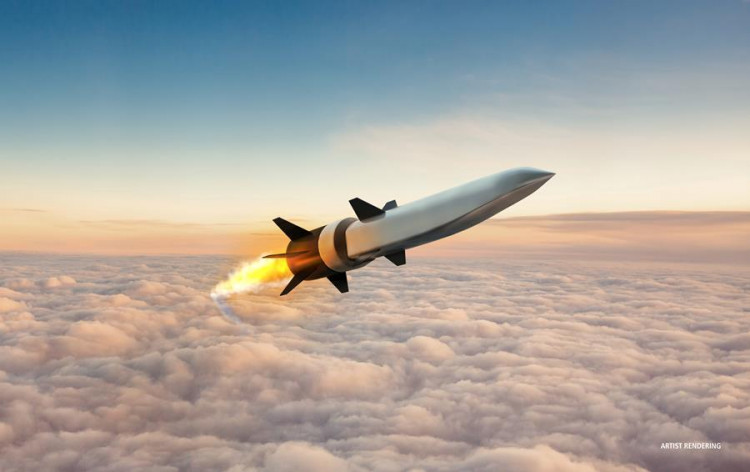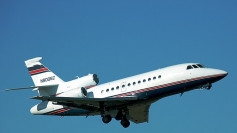The United States, in tandem with Raytheon Technologies and the Defense Advanced Research Projects Agency, successfully completed a hypersonic weapons test, setting the stage for future military operations.
The weapon system being developed -- an air-inhaling hypersonic cruise missile that can fly five times the speed of sound -- marks the first test of the weapon type since 2013, the Pentagon said Tuesday.
The test was conducted as the U.S. and its global adversaries fast-track their momentum to manufacture hypersonic weapons, the next generation of offensive capability that deprives rivals of reaction time and traditional defense maneuvers.
"This brings us one step closer to transitioning the HAWC to a weapons program of record that provides next-generation capability to the U.S. military," Andrew Knoedler, HAWC program manager, said in quotes by Reuters.
A Northrop Grumman scramjet released the cruise missile, built by Raytheon, and the objectives of the mission were vehicle integration, release sequence, launch separation, booster ignition, and cruise phase. All of these goals were achived.
The missile was detached from a plane seconds before its supersonic combustion engine kicked on, allowing the weapon to reach hypersonic speeds of around 3,853 miles per hour, DARPA said.
The U.S. Defense department has identified hypersonic weapons and counter-hypersonic weapons systems as the highest military priorities for the country's security, Wes Kremer, president of Raytheon's Missiles & Defense Business division, said.
Northrop Grumman and Raytheon signed a deal in 2020 to integrate Northrop's scramjet engines onto Raytheon's air-breathing hypersonic weapons.
"Investments in hypersonic weapons have started to pay dividends, responding to the progress already made by countries like China and Russia," Tom Karako, an analyst at the Center for Strategic and International Studies, told Reuters.
The HAWC is among multiple hypersonic systems within the DOD. Others include systems such as the U.S. Air Force's AGM-183A Air-Launched Rapid Response Weapon, which has failed twice during tests.
Dan Olson, Northrop's Weapon Systems Unit (WSU) vice president, said decades of learning state-of-the-art manufacturing technologies and industry partnerships "helped us define what is now possible."
Colin Whelan, Raytheon's vice president for Advanced Missile Technology, called the test a "history-making moment."






